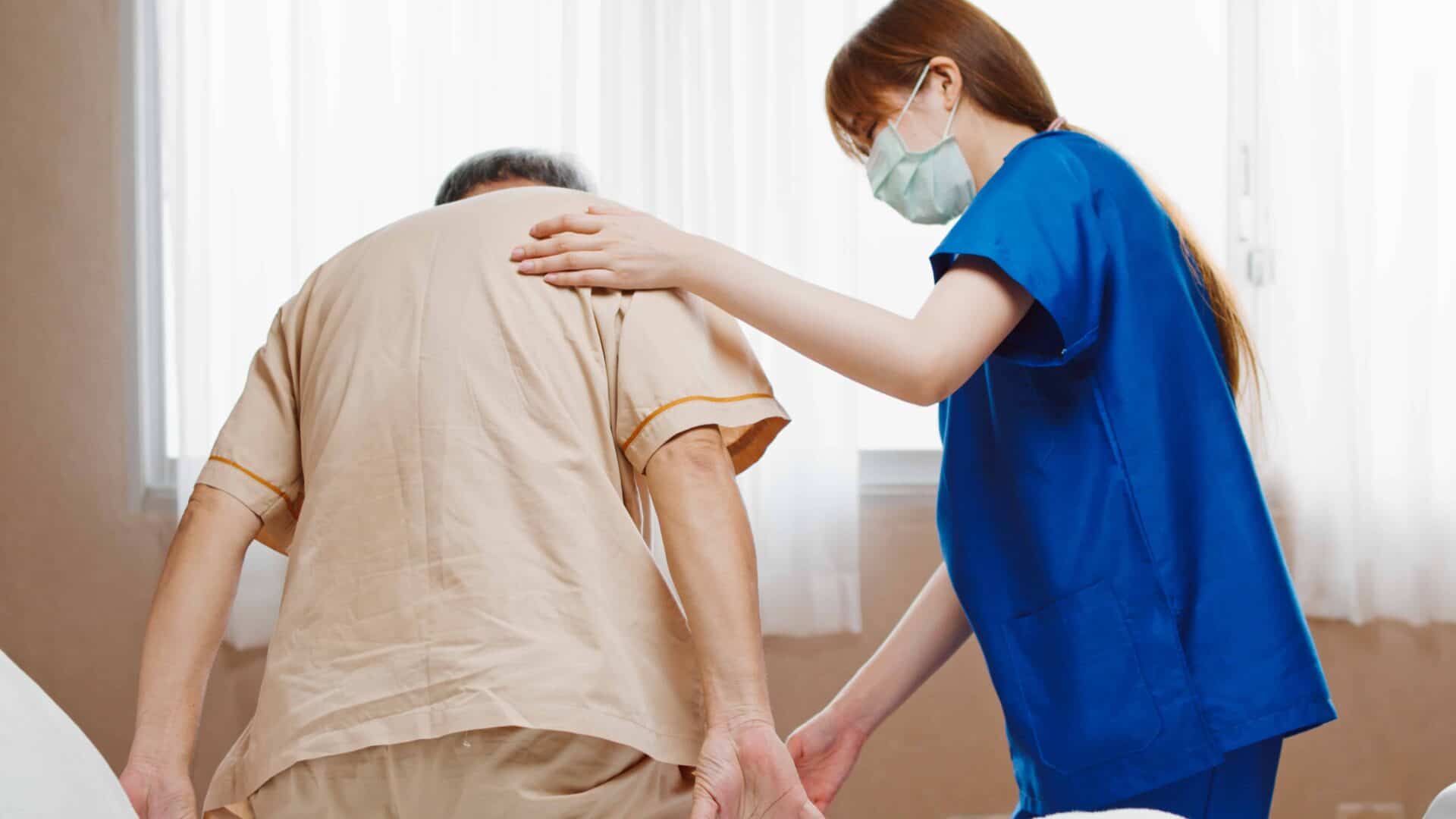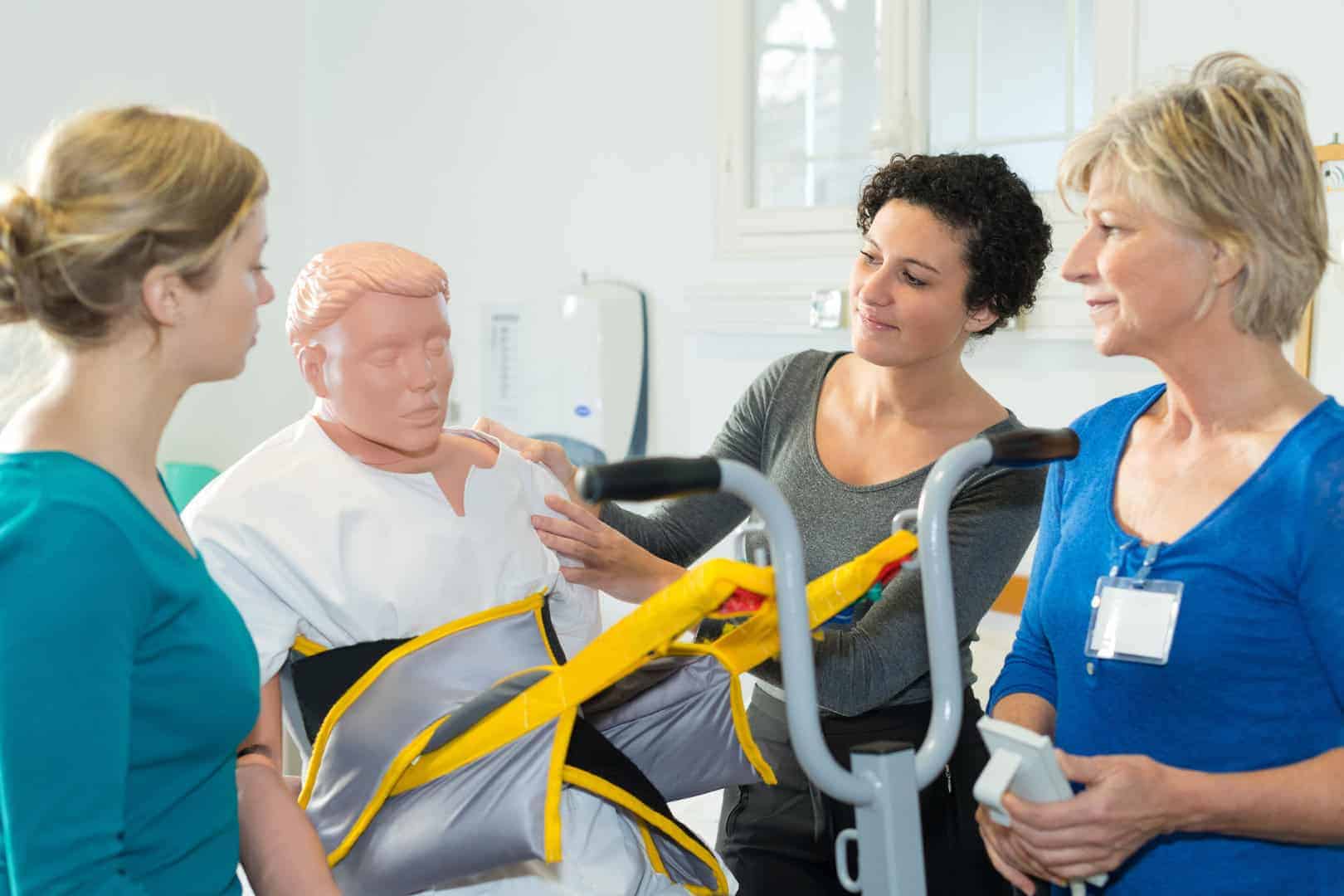This article discusses Moving and Handling training for carers, what it is, why it is important, and what the law requires concerning its practice.
An essential part of caring for a vulnerable person in a care home or residential setting is ensuring they can be assisted and moved safely and with minimal risk. This helps to ensure their safety and health, and this can be either with or without equipment, such as hoists. However, effective and efficient Moving and Handling training is also essential so that the carer or nurse is adequately protected from injury or strain.
Failure to provide safe patient handling can result in problems such as back pain and musculoskeletal issues for the carer, and potential accidents and injuries relating to patients. Consequences such as these can then lead onto further issues such as additional costs (either through legal fees from compensation claims, or from needing to cover hurt staff), and being detrimental to the overall experience of the patient (such as extended stays for recovery and increased care requirements). Poor moving and handling skills can also result in a lack of dignity for the patient, which can have serious and lasting mental ramifications.
The reasons above outline why Moving and Handling training is extremely important, and why it is considered by the CQC as a statutory training requirement. So, how can you make sure your staff are up-to-date and compliant with this training?

An essential part of caring for a vulnerable person in a care home or residential setting is ensuring they can be assisted and moved safely and with minimal risk. This helps to ensure their safety and health, and this can be either with or without equipment, such as hoists. However, effective and efficient Moving and Handling training is also essential so that the carer or nurse is adequately protected from injury or strain.
Failure to provide safe patient handling can result in problems such as back pain and musculoskeletal issues for the carer, and potential accidents and injuries relating to patients. Consequences such as these can then lead onto further issues such as additional costs (either through legal fees from compensation claims, or from needing to cover hurt staff), and being detrimental to the overall experience of the patient (such as extended stays for recovery and increased care requirements). Poor moving and handling skills can also result in a lack of dignity for the patient, which can have serious and lasting mental ramifications.
The reasons above outline why Moving and Handling training is extremely important, and why it is considered by the CQC as a statutory training requirement. So, how can you make sure your staff are up-to-date and compliant with this training?

What does the law say?
Whilst Moving and Handling training is a mandatory training requirement within the CQC when caring for vulnerable people, many aspects covered by this training are also vital for complying with many statutory working laws, such as the following:
- Health and Safety at Work etc Act 1974 (HSWA)
- Manual Handling Operations Regulations 1992 (MHOR) (as amended 2002)
- The Management of Health and Safety at Work Regulations 1999
- Provision and Use of Work Equipment Regulations 1998 (PUWER)
- Lifting Operations and Lifting Equipment Regulations 1998 (LOLER)
It is just as important to ensure your home and its staff are abiding by health and safety statutes and laws as well as the mandatory CQC training requirements. This will help assure the safety of both your staff and patients in all aspects of day-to-day care.

